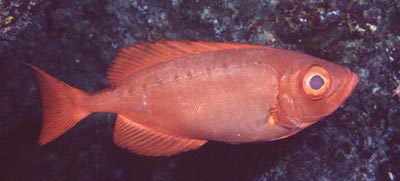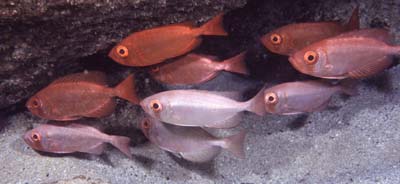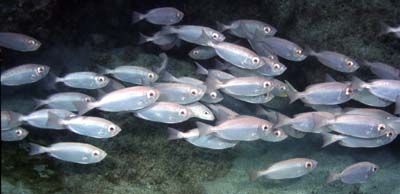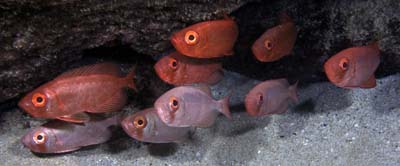| hawaiisfishes.com |
|
Home |
Fishes | Invertebrates |
Books | CDs
| Links |
Contact |
|
past
fishes of the month HAWAIIAN
BIGEYE `äweoweo
|
 |
|
HAWAIIAN BIGEYE
· `äweoweo |
 |
|
THE
GREAT RUN OF 2003 |

|
| Here
are some ways to tell the two bigeye species apart: 1) In the Hawaiian Bigeye the back edge of the tail fin appears squared off or slightly concave while in the Common Bigeye it is slightly rounded. 2) The Hawaiian Bigeye often has a series of faint dark spots on its side along the lateral line, while the Common Bigeye often has some faint dark spots in the dorsal, anal and tail fins. 3) The Hawaiian Bigeye often schools, sometimes in the open outside its shelter. This behavior is not often seen with the Common Bigeye. |
 |
|
Home | Fishes | Invertebrates | Books | CDs | Links | Contact Text and photos copyright John P. Hoover |